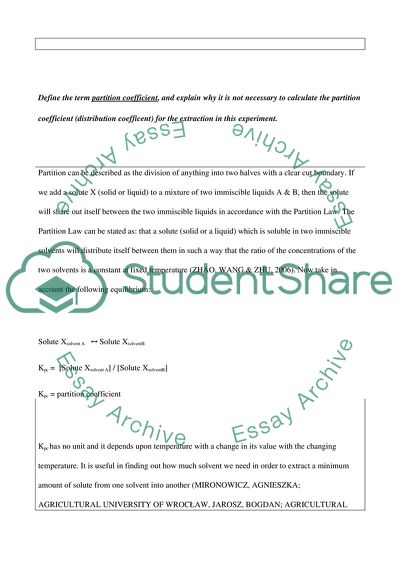Cite this document
(Hydrolysis of Phenyl Benzoate, Preparation of Cyclohexanol from Lab Report, n.d.)
Hydrolysis of Phenyl Benzoate, Preparation of Cyclohexanol from Lab Report. https://studentshare.org/health-sciences-medicine/1808473-hydrolysis-of-phenyl-benzoate-preparation-of-cyclohexanol-from-cyclohexene-and-diels-alder-reaction-of-maleic-anhydride-with-cyclopentadiene
Hydrolysis of Phenyl Benzoate, Preparation of Cyclohexanol from Lab Report. https://studentshare.org/health-sciences-medicine/1808473-hydrolysis-of-phenyl-benzoate-preparation-of-cyclohexanol-from-cyclohexene-and-diels-alder-reaction-of-maleic-anhydride-with-cyclopentadiene
(Hydrolysis of Phenyl Benzoate, Preparation of Cyclohexanol from Lab Report)
Hydrolysis of Phenyl Benzoate, Preparation of Cyclohexanol from Lab Report. https://studentshare.org/health-sciences-medicine/1808473-hydrolysis-of-phenyl-benzoate-preparation-of-cyclohexanol-from-cyclohexene-and-diels-alder-reaction-of-maleic-anhydride-with-cyclopentadiene.
Hydrolysis of Phenyl Benzoate, Preparation of Cyclohexanol from Lab Report. https://studentshare.org/health-sciences-medicine/1808473-hydrolysis-of-phenyl-benzoate-preparation-of-cyclohexanol-from-cyclohexene-and-diels-alder-reaction-of-maleic-anhydride-with-cyclopentadiene.
“Hydrolysis of Phenyl Benzoate, Preparation of Cyclohexanol from Lab Report”. https://studentshare.org/health-sciences-medicine/1808473-hydrolysis-of-phenyl-benzoate-preparation-of-cyclohexanol-from-cyclohexene-and-diels-alder-reaction-of-maleic-anhydride-with-cyclopentadiene.


